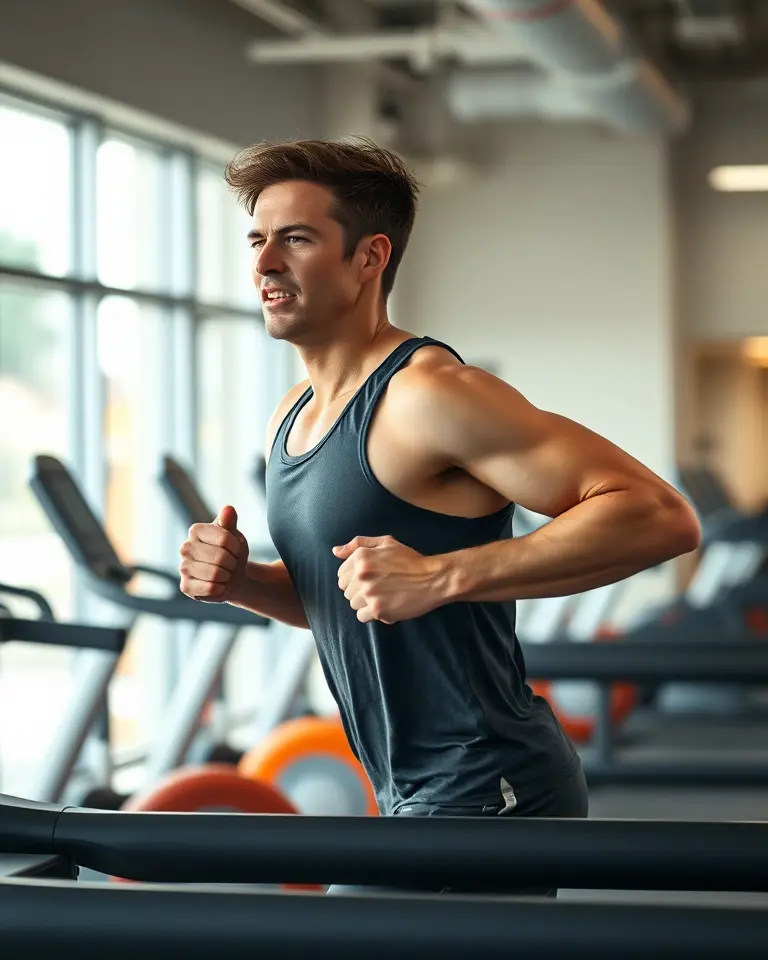Improving both leg strength and cardiovascular fitness is crucial for overall health and well-being. A well-rounded routine that combines these two elements not only saves time but also maximizes your fitness potential. This article explores how to effectively blend leg strengthening exercises with cardio workouts to achieve optimal results.
Why Combine Leg Strength and Cardio?
Working your legs and cardio simultaneously offers several advantages. Firstly, it’s an efficient way to train, allowing you to build muscle and improve endurance in a single session. This approach is beneficial for those with busy schedules. Secondly, the large muscles in your legs and glutes require significant energy, which elevates your heart rate and enhances cardiovascular health. This dual approach not only makes you stronger but also boosts the efficiency of your heart and lungs. Research shows that leg strength and cardiorespiratory fitness are key factors in maintaining mobility and improving the quality of life as you age.
Effective Exercises for Leg Strength and Cardio
Several exercises effectively target both leg muscles and cardiovascular fitness. These can be incorporated into a variety of workouts, from high-intensity interval training (HIIT) to more moderate-paced routines. Here are some of the best exercises:
High-Impact Cardio and Strength Exercises
- Squat Jumps: Start in a squat position, and then jump explosively into the air. Land softly back into the squat. This exercise engages the glutes and quads while elevating your heart rate.
- Alternating Jump Lunges: Begin in a lunge position. Jump and switch legs in mid-air, landing in a lunge with the opposite leg forward. This dynamic movement improves leg power and cardiovascular fitness.
- Skater Hops: Mimic a skater’s movement by hopping from side to side, landing on one leg. This exercise enhances agility, endurance, and leg strength.
- Screamer Lunges: Start with feet hip-width apart. Lunge one leg back, then explosively drive the knee of that leg up to hip height, jumping into the air, before returning to the start position.
- Squat Jacks: Start with your feet together, jump your feet out into a wide stance while lowering into a squat. Jump back to the starting position. This exercise targets the glutes, quads, and inner thighs while elevating heart rate.
- Lunge with Front Kick: Begin upright and then step back into a lunge. Use the front leg to drive up while kicking the back leg forward, before returning to the lunge position. This combines strength with a cardio element.
- Running in Place: Jog on the spot, which is a simple way to elevate your heart rate and engage your leg muscles as a warm-up.
- High Knees: Run in place, bringing your knees up high towards your chest. This exercise is excellent for warming up and boosting cardiovascular activity.
Low-Impact Cardio and Strength Exercises
- Walking Lunges: Step forward into a lunge, ensuring your front knee doesn’t go past your toes. Alternate legs while walking forward. This exercise is great for building leg strength and endurance.
- Pulsing Bodyweight Squats: Stand with feet hip-width apart and toes slightly pointed outwards. Squat down and then pulse by moving up and down slightly without fully extending your legs. This builds muscle endurance.
- Glute Bridge Pulse: Lie on your back with your knees bent and feet flat on the floor. Lift your hips off the ground, squeezing your glutes. Pulse up and down slightly at the top. This targets the glutes and improves core stability.
- Step-Ups: Use a box or a step. Step up with one leg, bringing the other leg up to meet it. Step back down. This low-impact exercise improves leg strength and balance.
- Farmer’s Walks: Carry a kettlebell or dumbbell in one hand while walking. This can be done on a flat surface or up and down stairs to add challenge. It builds strength and endurance.
- Air Squats: Perform a standard squat with feet shoulder-width apart, lowering the hips down and back while maintaining a flat back and heels on the ground. This strengthens the thighs, glutes, and core.
Integrating Cardio with Resistance
Combining cardio with resistance training can enhance both strength and endurance. Here are some ways to achieve this:
- Interval Training: Alternate between short bursts of high-intensity cardio (like jump squats or skater hops) and resistance exercises (like lunges or squats). This method maximizes calorie burn and muscle engagement.
- Circuit Training: Perform a series of leg strength exercises followed by a cardio activity, such as a short run or cycling, with minimal rest between exercises. This type of training keeps your heart rate elevated while building muscle.
- Pyramid Training: Increase the number of reps for strength exercises while decreasing the distance or time for cardio, or vice-versa, creating a “pyramid” effect. For example, start with one squat and one toe touch followed by a 50-meter jog, then progress to two reps of each, and so on.
Designing Your Workout
A well-structured workout should include a warm-up, the main workout, and a cool-down.
- Warm-up: Start with 5-10 minutes of light cardio, such as jogging in place, dynamic hamstring stretches, or brisk walking, to prepare your muscles for exercise. Include dynamic stretches like leg swings and arm circles.
- Main Workout: Incorporate a mix of the exercises mentioned above, tailored to your fitness level. Choose exercises that you enjoy to ensure consistency. For example:
- Circuit Example: Perform squats, then immediately do 30 seconds of high knees, followed by lunges then mountain climbers, and so on. Repeat the circuit two to three times.
- Interval Example: Alternate 1 minute of high-intensity jump squats with 1 minute of walking lunges, repeat the cycle.
- Pyramid Example: Follow the half pyramid format as described earlier for the warm up, then move on to other exercises.
- Cool-down: Finish with 10 minutes of light cardio and static stretching, focusing on the leg muscles, to improve flexibility and aid recovery.
Adapting the Workout
It’s essential to adapt the workout to your individual fitness level and goals.
- Beginners: Start with bodyweight exercises and focus on proper form. Gradually increase the intensity and duration of your workouts. Begin with shorter intervals for cardio and focus more on strength and stability.
- Intermediate: Incorporate light weights or resistance bands to increase the challenge. Gradually increase the intensity of your cardio sessions and introduce more challenging exercises.
- Advanced: Use heavier weights and consider plyometric exercises to enhance leg power. Increase the intensity and duration of your cardio work, and integrate variations of exercises.
Important Considerations
- Proper Form: Focus on maintaining correct form to avoid injuries. If needed, consult a trainer for guidance.
- Listen to Your Body: Do not push yourself too hard. Rest when needed and modify exercises as necessary.
- Recovery: Allow sufficient time for your muscles to recover. This could be several days after an intense strength training workout. Light cardio can be done the following day but avoid intense workouts.
- Progression: Gradually increase the intensity, duration or resistance as your fitness improves. This will prevent plateauing and encourage consistent progress.
- Nutrition: Maintain a balanced diet to support your fitness goals.
- Variety: Vary your workouts to keep them engaging and to target different muscle groups. Include exercises that challenge your legs and lungs.
- Consult with a professional: If you have any health issues or concerns, talk to your doctor before starting a new exercise program.
Combining leg strength and cardio into your workout routine is a highly effective way to enhance overall fitness, improve cardiovascular health, and build strong legs. By choosing the right exercises, following a well-structured workout, and listening to your body, you can achieve your fitness goals and enjoy a healthier lifestyle.







